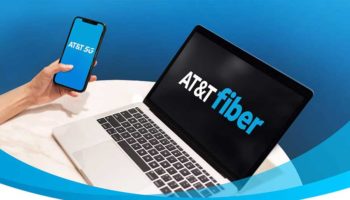High-Tech Smokers Beware: FDA proposes big regulations on e-cigarettes

The FDA has proposed new rules that would bring electronic cigarettes under its regulations for tobacco products, even though that’s not exactly what they are.
are.
The New York Times broke this story yesterday (April 24th), saying the FDA was preparing to announce “sweeping new rules” to regulate the sale of e-cigs, cigars, gels, and pipes. The proposed rules bring electronic nicotine delivery systems aka e-cigs under the exact same stringent rules as Marlboros.
The new rules are open for comment for 75 days. According to the release:
Consistent with currently regulated tobacco products, under the proposed rule, makers of newly deemed tobacco products would, among other requirements:
—Register with the FDA and report product and ingredient listings;
—Only market new tobacco products after FDA review;
—Only make direct and implied claims of reduced risk if the FDA confirms that scientific evidence supports the claim and that marketing the product will benefit public health as a whole; and
—Not distribute free samples.
In addition, under the proposed rule, the following provisions would apply to newly “deemed” tobacco products:
—Minimum age and identification restrictions to prevent sales to underage youth;
—Requirements to include health warnings; and
—Prohibition of vending machine sales, unless in a facility that never admits youth.
The proposed rules fall in line with the thinking behind recent public bans that have been enacted in various cities in the country, such as New York. Even though electronic cigarettes do not contain tobacco, regulators seem intent on treating them as regular cigarettes because they sometimes contain nicotine and are conceptually linked to regular smoking.
The FDA’s request for comment however, seems to acknowledge that ecigs and cigarettes are not actually one in the same.
You can have cartridges with different levels of nicotine, ranging from 6mg-18mg with EverSmoke for instance, as well as nicotine cartridges with 0mg (ZERO) of nicotine – which are just flavored vapors. While the nicotine levels may vary, most electronic cigarette companies do offer nicotine-free options.
This begs the question of if the FDA intends on regulating ALL e-cigs, and vaporizers, which is the assumption of most observers. Many of the anti-smoking zealots are anxious to limit their use in public places, regardless of the effects due to their similar appearance to a standard cigarette. As a matter of fact, most advocates for regulations lump the terms vaporizer and e-cigs interchangeably, although there are clear distinctions.
Electronic cigarette (e-cigarette) is the term used to describe a subcategory of vaporizers designed to replace cigarettes. E-cigarettes make use of E-Liquid: flavoring and nicotine dissolved in a solution of vegetable glycerine and/or propylene glycol. Using E-cigarettes, as opposed to lit cigarettes, is considered to overall be a safer experience for both users and those nearby.
Some advocates are anxious
“It is inexcusable that it has taken the FDA and the Administration so long to act,” Matthew L. Myers, president of the Campaign for Tobacco-Free Kids, said in a statement. “This delay has had serious public health consequences as these unregulated tobacco products have been marketed using tactics and sweet flavors that appeal to kids, and their use has skyrocketed.”
Benefits of e-cigarettes
Research has shown that e-cigarettes produce 8 to 450 times less carcinogens than regular cigarettes. In 2013, a paper about carcinogens in e-cigarettes from France stated that e-cigarettes were “potentially carcinogenic,” which lead media outlets to spread misinformation on the dangers of e-cigarettes. Later research showed that the original research was flawed and, in fact, e-cigarettes contain much lower amounts of carcinogens than lit cigarettes.
Benefits, the fact they can have zero nicotine, and other facts matter little to those activists wanting to ban, or severely limit the use of, e-cigs. They see them as a way of ramping children into habitual tobacco use. They, of course, believe the FDA has already waited too long.
Years ago the campaigns by the FDA to have control (regulation) over tobacco [companies] relied on one simple fact – that they were addictive. No other qualities of a cigarette fit the description of “drug”. So, they went on a rampage to prove addiction. Now the entire world thinks they are more addictive than even heroin.
Also up in the air is the regulatory fate of some cigars. The current proposal would include e-vaping products and other tobacco products, but premium cigars may be excluded.
The FDA said it would seek public comment on whether all cigars should be regulated equally. One option proposed by the agency is to define a category of premium cigars that would not be subject to the FDA’s authority. Cigar companies, backed by some members of Congress, had lobbied heavily for a regulatory carve-out for premium cigars. Several lawmakers asked that premium cigars be exempt. “As you know,” they wrote, “premium cigars are a niche product with an adult consumer base, much like fine wines. The majority of people who enjoy a cigar do so occasionally, often in social or celebratory settings.”
Taken as a whole, the evidence suggests the main gripe is that kids are attracted to e-cigs. According to the latest University of Michigan Mott Children’s Hospital National Poll on Children’s Health, nearly half of parents are concerned their child will try e-cigarettes, and that it will encourage tobacco use. Taking ALL nicotine form e-cigs may not even help. Look for the hammer to fall soon.




